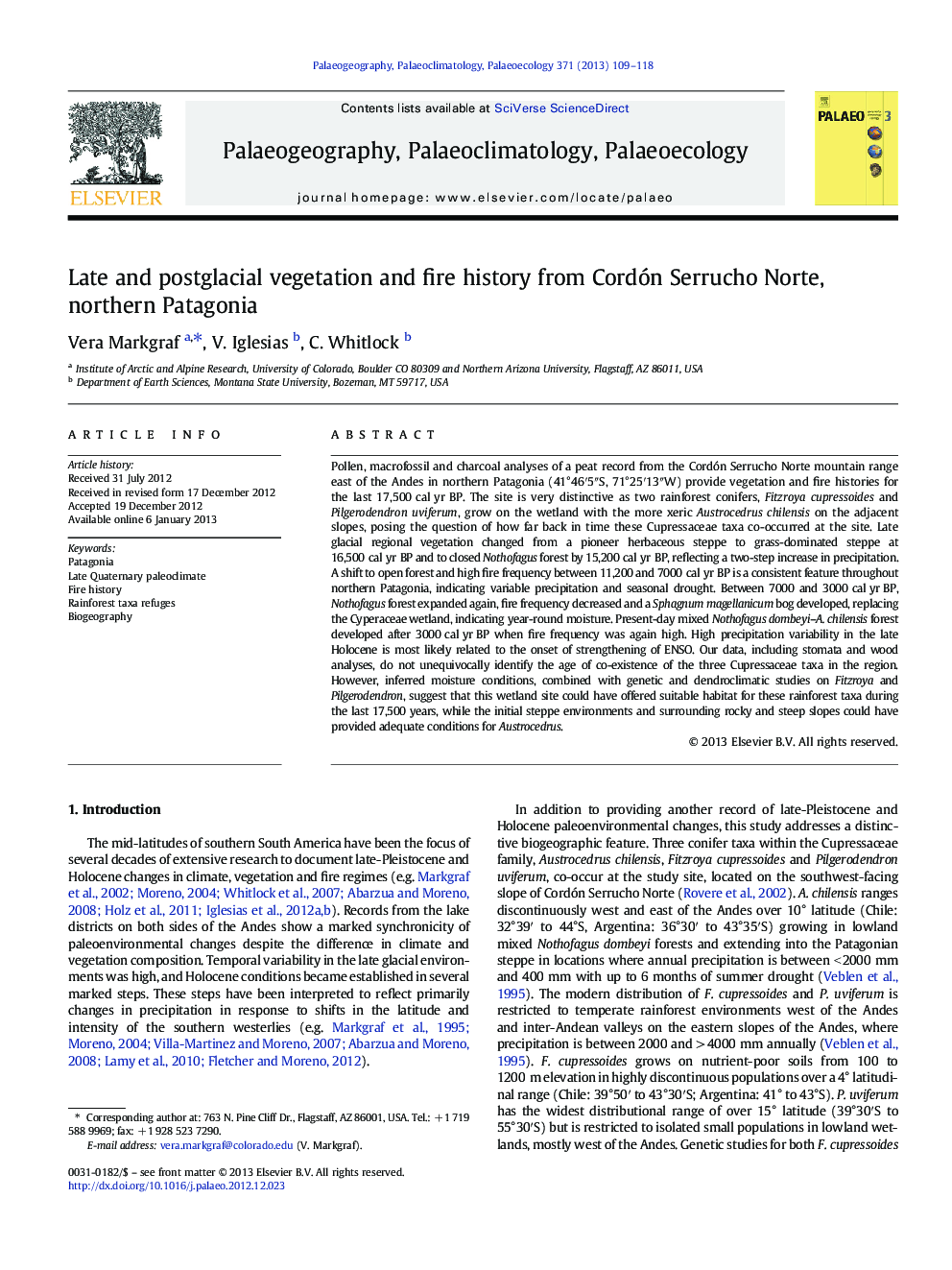| کد مقاله | کد نشریه | سال انتشار | مقاله انگلیسی | نسخه تمام متن |
|---|---|---|---|---|
| 4466644 | 1622215 | 2013 | 10 صفحه PDF | دانلود رایگان |

Pollen, macrofossil and charcoal analyses of a peat record from the Cordón Serrucho Norte mountain range east of the Andes in northern Patagonia (41°46′5″S, 71°25′13″W) provide vegetation and fire histories for the last 17,500 cal yr BP. The site is very distinctive as two rainforest conifers, Fitzroya cupressoides and Pilgerodendron uviferum, grow on the wetland with the more xeric Austrocedrus chilensis on the adjacent slopes, posing the question of how far back in time these Cupressaceae taxa co-occurred at the site. Late glacial regional vegetation changed from a pioneer herbaceous steppe to grass-dominated steppe at 16,500 cal yr BP and to closed Nothofagus forest by 15,200 cal yr BP, reflecting a two-step increase in precipitation. A shift to open forest and high fire frequency between 11,200 and 7000 cal yr BP is a consistent feature throughout northern Patagonia, indicating variable precipitation and seasonal drought. Between 7000 and 3000 cal yr BP, Nothofagus forest expanded again, fire frequency decreased and a Sphagnum magellanicum bog developed, replacing the Cyperaceae wetland, indicating year-round moisture. Present-day mixed Nothofagus dombeyi–A. chilensis forest developed after 3000 cal yr BP when fire frequency was again high. High precipitation variability in the late Holocene is most likely related to the onset of strengthening of ENSO. Our data, including stomata and wood analyses, do not unequivocally identify the age of co-existence of the three Cupressaceae taxa in the region. However, inferred moisture conditions, combined with genetic and dendroclimatic studies on Fitzroya and Pilgerodendron, suggest that this wetland site could have offered suitable habitat for these rainforest taxa during the last 17,500 years, while the initial steppe environments and surrounding rocky and steep slopes could have provided adequate conditions for Austrocedrus.
► 17.5 k pollen, macrofossil and charcoal record from northern Patagonia
► Present co-existence of rainforest and xeric conifers possibly of glacial age
► Genetic and dendroclimatic study of rainforest taxa supports local refugium.
► Intervals of high fire activity occurred from 11 to 8 k and after 3 k
Journal: Palaeogeography, Palaeoclimatology, Palaeoecology - Volume 371, 1 February 2013, Pages 109–118